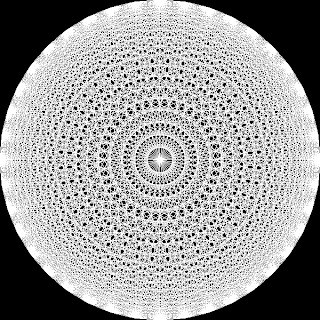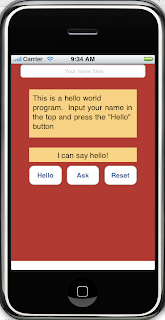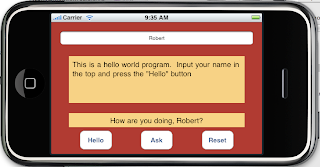


What Curves?
Bezier curves. We'll take the formal mathematical approach to this problem.
Bezier curves. We'll take the formal mathematical approach to this problem.
- Take n+1 control points.
- The curve will start at the first control point and end at the last control point.
- Iterate between t = 0 and t = 1 for small steps of t for curve points and connect the points:
Curve point(t) = Sum each point multiplied by the Bernstein polynomial for "n choose i" evaluated at t.
Implementation
For my implementation, I created a BernsteinPolynomial class, which objects are instantiated for a given (i,n) pair. A call can be made to evaluate the polynomial at a given t value. Be careful, with this approach you need to regenerate all the polynomials every time you change the number of control points.
For my implementation, I created a BernsteinPolynomial class, which objects are instantiated for a given (i,n) pair. A call can be made to evaluate the polynomial at a given t value. Be careful, with this approach you need to regenerate all the polynomials every time you change the number of control points.
public class BernsteinPolynomial {
private int mBinomialCoefficient;
private int mI, mN;
public BernsteinPolynomial(int i, int n) {
// Sanity checks
assert (n >= 0);
assert (i >= 0);
if (n < 0 || i < 0) {
throw new Error("Cannot create Bernstein polynomial for " + i + ','
+ " and " + n + '.');
}
// Setup object
mI = i;
mN = n;
mBinomialCoefficient = Combinatorics.binomialCoefficient(mN, mI);
}
public String toString() {
return "(" + mBinomialCoefficient + ") " + ((mI == 0) ? "" : "t^" + mI)
+ "(1-t)^(" + (mN-mI)+")";
}
/**
* Evaluate this at the given t value.
*/
public double evaluate(double t) {
double oneMinusT = 1.0 - t;
// Bn(t) = (n choose i)*(t to the i)*(1 - t to the n-i)
return mBinomialCoefficient * Math.pow(t, mI)
* Math.pow(oneMinusT, mN - mI);
}
}
Writing the "n choose i" shows a useful case of recursion.
public class Combinatorics {
public static int factorial(int i) {
assert(i >= 0);
if (i == 0 || i == 1)
return 1;
else
return i * factorial(i - 1);
}
public static int binomialCoefficient(int n, int k) {
return factorial(n) / factorial(k) / factorial(n - k);
}
}
Encapsulation
A BezierCurve encapulasates this so we can change to a recursive implementation of the drawing without messing with our clients. It also handles caching between drawings so we don't need to recalculate every time we draw.
A BezierCurve encapulasates this so we can change to a recursive implementation of the drawing without messing with our clients. It also handles caching between drawings so we don't need to recalculate every time we draw.











